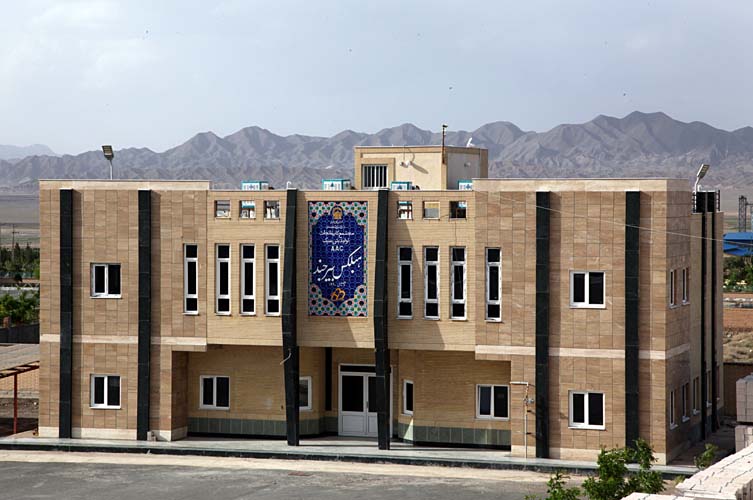In today’s rapidly evolving world of manufacturing, flexibility and adaptability are key to staying competitive. Traditional production lines are often limited by rigid processes and specialized equipment. Enter the sinablock.ir, a modular approach to manufacturing that is transforming how industries produce goods. This innovation is more than just a buzzword—it’s a paradigm shift with the potential to change the future of industrial design and production.
What is a Block Factory?
At its core, a Block Factory is a manufacturing system composed of modular, interchangeable units or “blocks” that can be configured and reconfigured as needed. Each block performs a specific task, such as assembly, quality control, or packaging, and can be easily swapped or upgraded without having to overhaul the entire production line. This allows manufacturers to tailor their production processes to meet changing demands or introduce new products more quickly.
The concept of a Block Factory can be likened to a LEGO set, where different pieces come together to form a variety of structures. The system is dynamic, scalable, and most importantly, adaptable to different manufacturing environments.
How Block Factories Work
Block Factories rely on a few key principles to function:
- Modular Design: Each block within the system is self-contained and designed to perform a specific operation. These blocks can be physical components, such as robotic arms or 3D printers, or software modules that control various aspects of the manufacturing process.
- Interconnectivity: The blocks are designed to communicate seamlessly with one another. A central system orchestrates the coordination between blocks, allowing for real-time monitoring, adjustments, and troubleshooting. This interconnected system is often enhanced by technologies such as the Internet of Things (IoT), AI, and machine learning.
- Flexibility: Unlike traditional production lines that are fixed and specialized, Block Factories offer high levels of flexibility. Manufacturers can add, remove, or rearrange blocks depending on the requirements of a particular product or process. This makes it easier to scale production up or down, or to shift between different products with minimal downtime.
- Sustainability: Because of their flexibility, Block Factories inherently support more sustainable production methods. Reducing the need for custom-built machinery and minimizing waste through adaptive processes make this model appealing from both an economic and environmental perspective.
Advantages of the Block Factory Model
- Reduced Downtime: One of the most significant advantages of Block Factories is their ability to reduce downtime. Since each block can be easily swapped or maintained without disrupting the entire system, maintenance and upgrades are much faster and more efficient. This is especially important for industries where continuous production is critical.
- Faster Product Development: Traditional manufacturing setups often struggle to adapt to new product designs without significant retooling. With Block Factories, new products can be introduced faster because the production line can be reconfigured to meet new specifications, reducing the time it takes to bring a product to market.
- Cost-Efficiency: By leveraging modular systems, companies can avoid large capital expenditures for specialized equipment. They can purchase only the blocks they need, upgrading or expanding as required. This is particularly advantageous for small and medium-sized enterprises (SMEs), which can benefit from scalable production systems without a massive upfront investment.
- Customization and Personalization: Modern consumers increasingly demand personalized products. Block Factories make it easier for manufacturers to produce customized goods, as the system can be adjusted to accommodate specific requests without needing to halt or significantly alter production processes.
Real-World Applications
Block Factories are already being implemented in various industries, from automotive to electronics and even in small-scale bespoke manufacturing. In the automotive industry, for example, modular production lines are enabling manufacturers to produce both electric and combustion engine vehicles on the same line, simply by rearranging the blocks.
In consumer electronics, companies are using Block Factories to develop personalized products, such as custom smartphones and wearables. Startups and smaller companies are benefiting from the flexibility of Block Factories, allowing them to compete with larger manufacturers by efficiently scaling their operations as needed.
Challenges and the Future of Block Factories
Despite the numerous advantages, there are some challenges that need to be addressed for Block Factories to reach their full potential. One major hurdle is the initial cost and complexity of setting up such a system. While modular blocks are cheaper in the long run, the upfront investment in advanced technology, software, and hardware can be prohibitive for some companies.
Another challenge is ensuring compatibility and standardization across different blocks. As various manufacturers produce their own modular systems, the lack of industry-wide standards can create difficulties in integrating blocks from different suppliers.
However, with advancements in AI, IoT, and machine learning, the potential for Block Factories to become the norm in manufacturing is high. In the future, these systems will likely become more accessible and widespread, especially as industries recognize the need for agile and sustainable production methods.
Conclusion
The Block Factory model is a revolutionary approach to manufacturing, offering flexibility, efficiency, and adaptability in ways that traditional production lines cannot. As industries continue to evolve, the ability to quickly respond to changes in demand, product customization, and sustainability will be critical. Block Factories provide the tools to meet these challenges, making them an essential part of the future of manufacturing.
As we look forward, the Block Factory’s blend of modularity, technology, and flexibility will not only transform the way products are made but also empower manufacturers to innovate like never before.


